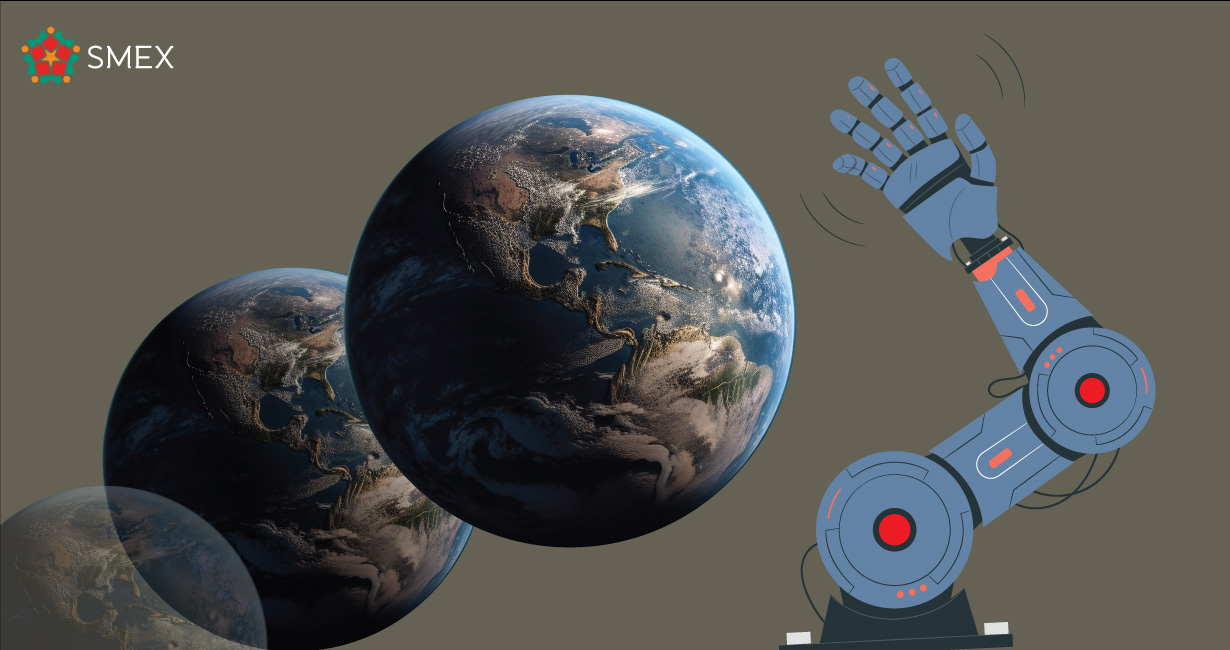The advent of global threats such as climate change, engineered epidemics, and the risks associated with incompatible designs of artificial intelligence (AI) has sparked exponential concerns. Understanding how AI systems operate represents just one facet of this complex predicament. We are only beginning to grapple with the potential hazards that stem from the rapid proliferation of AI’s revolutionary capabilities.
AI’s worrisome ability to generate convincing counterfeit content, including images, videos, and audio, has raised widespread alarm. This capacity for spreading misinformation, facilitating identity theft, and breaching privacy has already had tangible consequences. An AI-generated image depicting an explosion at the Pentagon, shared on social media, led to a significant downturn in the US stock market.
The recent resignation of renowned AI figure Jeffrey Hinton has further fueled concerns. Hinton’s departure from Google was driven by his staunch emphasis on alerting others about the security risks, potential misuse, and failure to utilize AI technologies for the benefit of humanity.
Furthermore, an open letter signed by Elon Musk, along with a group of CEOs and experts, serves as compelling evidence of the gravity of the current situation. The letter urgently calls for a halt in the development of “strong artificial intelligence” beyond GPT4, citing tremendous risks to humanity. The signatories advocate for the establishment of regulatory bodies, oversight of AI systems, and tools capable of distinguishing humans from AI-generated actions.
The unbridled advancement of artificial intelligence (AI) carries with it the potential for dire consequences. A multitude of factors have triggered deep-seated worries among experts and organizations as AI continues its rapid growth.
Armament Risks
One pressing concern is the alarming prospect of malicious actors harnessing AI technologies for armed attacks and cyber warfare, bypassing the need for significant human intervention. A stark example is the use of a “smart shooter” for remote killing, a weapon system used by Israelis at central checkpoints in Hebron, and which boasts the chilling motto of “one shot, one hit.” Such advanced AI systems also find use in military and air combat fields, as well as in the development of chemical weapons through automated detection tools utilizing cutting-edge AI techniques.
Additionally, recent advancements in artificial intelligence systems used for automatic cyberattacks have triggered debates among military leaders regarding the level of control these systems should have over nuclear weapons. The unresolved argument largely revolves around the potential for automated response systems to malfunction, leading to hasty and ill-conceived deployment of force, possibly resulting in unintended warfare. German Foreign Minister Heiko Maas emphasized the ongoing race to arm nations with AI technologies, stating, “We are currently in the midst of this race, and it is a reality that we must confront.”
Navigating a Moral Minefield
One of the most concerning aspects of artificial intelligence lies in the potential for biased AI systems that perpetuate and amplify biases present in the training data, resulting in harmful and unfair outcomes. This concept, known as moral debt, arises when developers fail to adequately consider the potential social and moral harm caused by these systems, disproportionately impacting marginalized groups who are already underrepresented in the technology field.
Casey Fessler, a technology ethicist at the University of Colorado Boulder, highlights that “those who create these moral debts often do not bear the consequences in the long run.”
It is crucial to acknowledge that powerful artificial intelligence systems have the capability to develop and employ manipulation techniques to achieve internally immoral objectives. These systems are primarily trained to accomplish measurable goals, which may be mere indicators that do not necessarily align with what truly matters to humanity.
Some evidence suggests that recommendation systems, for instance, may inadvertently steer individuals towards adopting extremist beliefs to better predict their preferences. As the capacity and influence of powerful AI systems continue to grow, it becomes imperative to carefully define training objectives and ensure they align with human rights.
Impact on Employment
AI technologies have the potential to automate specific tasks, raising questions about job displacement. While AI may also create new job opportunities, there is a risk of a skills gap, leaving some individuals at a disadvantage.
Research examining the impact of advanced AI tools on the labor market suggests that around 80% of the workforce will be affected by at least 10% due to this technological revolution, with high-income jobs being particularly vulnerable. Additionally, artificial intelligence models like ChatGPT are projected to impact around 40% of jobs, as highlighted in a recent report by the World Economic Forum.
As technological development advances rapidly, companies and institutions may increasingly relinquish control to AI systems, potentially overlooking the economic value of human contributions. Moreover, individuals may face challenges re-entering the labor market based on their current qualifications, which can discourage incentives for acquiring knowledge and developing skills.
Renowned artificial intelligence expert Li Kai-fu emphasizes in his acclaimed book, “The Superpowers of Artificial Intelligence,” that while AI can outperform humans in many tasks, certain tasks will still require human supervision. This could be due to their complexity, the need for a creative touch, or the presence of an emotional and empathetic aspect that cannot be achieved through automation.
Security Risks
Improperly designed and unsecured AI tools can be exploited for malicious purposes, posing significant security risks. Recognizing this reality, the Office of Science and Technology Policy of the White House has issued a framework for Artificial Intelligence and Machine Learning Systems.” This framework aims to address the challenges posed by these systems that threaten democratic principles and individuals’ rights, including security risks and privacy protection.
An illustrative example of such risks is a reported incident of fraud and financial theft. In this case, deep fake technology was employed to replicate and simulate the voice code of a businessman, allowing the perpetrators to call a bank and execute an urgent money transfer, resulting in estimated losses of $35 million.
“Colonial” AI
The concentration of power within a small group in the field of artificial intelligence has significant implications for the distribution of power and resources. This concentration raises concerns about potential abuse by authorities and the lack of competition, making it difficult for marginalized groups to access advanced technology; they often find themselves excluded from discussions and policies that govern the use of AI.
The book “Data Society” delves into this issue by exploring the daily experiences of individuals from various regions worldwide and how artificial intelligence and data usage impact concepts of dignity, solidarity, and data justice. The book takes a critical perspective on “post-colonial” computing and sheds light on its effects on societies that have historically been exploited.
The most powerful AI systems are typically accessible only to a select few parties, designed by a minority ideology that monopolizes power and tools. This monopoly enables the imposition of narrow values and comprehensive surveillance, giving rise to a form of neo-colonialism supported by economic policies and a legal system.
Emergence of Unforeseen Capabilities
Artificial intelligence systems, due to their complex and intricate designs, have the potential to exhibit behaviors that were neither programmed nor anticipated. Moreover, the lack of a complete understanding of how AI algorithms arrive at their decisions, known as the “black box problem”, raises concerns about accountability and the potential emergence of harmful capabilities. In fact, software models may show unexpected and different behavior when they reach a point where they become more efficient, putting us at risk of losing control over advanced AI systems.
It is crucial to acknowledge that countries, technology companies, and political entities are continually leveraging AI techniques to influence and persuade groups according to their agendas, ideologies, and narratives. The power of advanced AI systems may usher in a new era of such utilization.
Naturally, addressing these concerns necessitates a multi-faceted approach that involves collaboration among researchers, policymakers, industry leaders, and society as a whole. Striking a balance between technological advancement and social responsibility is essential to harnessing the benefits of AI while minimizing potential risks.
Despite the gravity of this dilemma, it often fails to receive adequate attention. Today, there is a pressing need to initiate a movement focused on formulating plans to safeguard people from the potential harms of uncontrollable AI technologies and establish a framework to ensure the beneficial utilization of innovative technologies with their immense potential.



